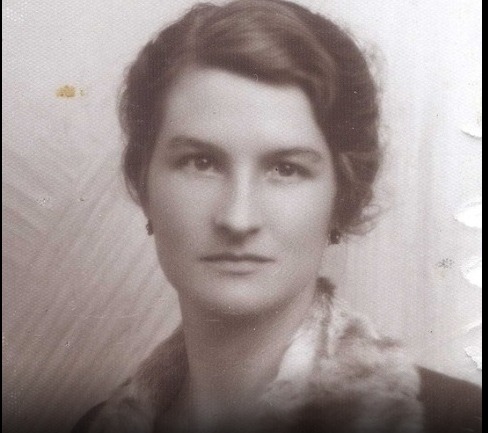They dismissed her as a crippled peasant woman

They dismissed her as a crippled peasant woman. She was actually destroying their army from the inside.
France, 1942. Every street had Nazi patrols. Every neighbor could be an informant. One whispered word meant torture in Gestapo cellars.
And through it all, a woman with a pronounced limp shuffled through village markets, chatted about the weather, poured milk into tin buckets.
The German soldiers barely glanced at her.
That was her greatest weapon.
While they saw a disabled farmwoman beneath their notice, Virginia Hall was coordinating sabotage operations that made the Nazi occupation a living nightmare.
Born in Baltimore in 1906, Virginia Hall was extraordinary from the start. Fluent in French, German, Italian, and Russian. Brilliant, fearless, hungry to serve her country as a diplomat.
Then came 1933. A hunting accident in Turkey. A shotgun blast to her left foot. Gangrene. Amputation below the knee.
She was fitted with a wooden prosthetic. She named it “Cuthbert.”
The U.S. State Department’s response? No amputees allowed in the Foreign Service. Your career is over.
They were so catastrophically wrong.
When France fell in 1940 and the Nazis began their brutal occupation, Virginia refused to watch from the sidelines. Britain’s SOE—Churchill’s shadow army of spies and saboteurs—saw what America couldn’t: a weapon disguised as a vulnerability.
She became one of their first female field agents sent behind enemy lines.
Her cover: American journalist. Her reality: ghost in the machine of Nazi-occupied France.
She built resistance networks across Lyon. Coordinated weapons drops from British planes. Passed intelligence hidden in flowerpots, coded messages in newspaper articles, secrets beneath café cocktail glasses.
She knew every back alley. Every escape route. Every safe house.
French resistance fighters called her “The Madonna.” The Gestapo called her “The Limping Lady.”
And they were hunting her with everything they had.
By 1942, Klaus Barbie—the sadistic “Butcher of Lyon”—declared her the most dangerous Allied agent in France. Wanted posters showed a woman with a limp. The Gestapo was closing in from every direction.
Virginia had to escape.
Her route: over the Pyrenees mountains into neutral Spain. In November. In winter. Through snow and ice.
On one leg and one wooden prosthetic.
The pain was agonizing. Cuthbert dug into her stump with every step across frozen mountain passes. At one point, she radioed London: “Cuthbert is giving me trouble.”
The confused response from headquarters: “If Cuthbert is giving you trouble, have him eliminated.”
She laughed through the pain and kept climbing.
She made it across. Bloody, exhausted, but alive.
Most people would have taken the desk job they offered her next. Would have said they’d done enough.
Not Virginia Hall.
When the British said her cover was too compromised to return, she joined America’s OSS—the organization that would become the CIA.And she went back anyway.
This time, she transformed completely. Gray-dyed hair. Filed teeth. A shuffling gait that disguised her limp as an elderly woman’s frailty.
In 1944, at age 38, with a wooden leg, she parachuted back into occupied France.
And she went to work.
Under her direction, French resistance forces destroyed bridges that could have carried Nazi reinforcements. Derailed supply trains. Cut communication lines. Ambushed German convoys in the countryside.
She radioed bombing coordinates to Allied planes. She organized guerrilla fighters across central France. She made Nazi-occupied territory ungovernable.
Her networks helped capture or kill hundreds of German soldiers. They sabotaged rail lines that could have reinforced the German defense against D-Day.
She was a one-woman intelligence operation behind enemy lines.
When France was liberated in 1944, Virginia Hall had spent more continuous time in occupied territory than almost any other Allied spy—male or female.
In 1945, General Donovan awarded her the Distinguished Service Cross—America’s second-highest military honor. The only civilian woman in WWII to receive it.
He wanted a public ceremony with press and recognition.
Virginia declined. Too much publicity, she said quietly. She preferred to stay invisible.
She joined the CIA and worked in intelligence for 15 more years. Never wrote a memoir. Never gave interviews. Never sought the spotlight.
She retired to a Maryland farm. When she died in 1982, most of the world had no idea what she’d done or who she’d been.
For decades, her story stayed buried in classified files.
But extraordinary people don’t stay hidden forever.
Today, Virginia Hall is finally recognized as one of history’s greatest spies. A woman who turned rejection into relentless purpose. Who made her disability invisible when necessary and irrelevant always.
Who outwitted the Gestapo, outmaneuvered one of history’s most brutal hunters, and helped liberate France—all while walking on a wooden leg named Cuthbert.
The Nazis thought she was harmless. Just another crippled peasant woman, beneath their notice.
That miscalculation cost them dearly.
Her name was Virginia Hall.
And she didn’t just fight the Third Reich.
She haunted it.